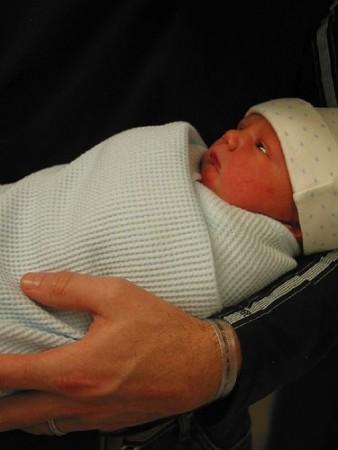
Swaddling, a traditional technique widely used by parents to wrap their newborns, can cause more harm than good. According to an expert, babies who were swaddled during the initial stages of growth were more likely to suffer hip problems during middle age.
Swaddling involves wrapping infants in blankets or clothes, placing strict restrictions on the baby's limb movement. Most of the parents use this popular method to keep their little ones warm and comfortable. However, Professor Nicholas Clarke, a paediatric orthopaedic surgeon, reported in the Archives of Disease in Childhood that this universal practice affected the natural position of the hip, by forcing it to straighten and move forward. This kind of misalignment can up the risk of osteoarthritis and hip replacement later in life, he added.
Professor Clarke, of Southampton University Hospital in UK, while providing more solid evidence, also narrated how an educational programme that advocated grandparents against swaddling helped reduce hip problems by half in Japan. He also strictly warned parents against tight swaddling that prevents the baby's legs from bending up and out at the hips. According to him, flexibility of legs at the hips is important for the health of hip joints.
Similar to the current study, previous research has shown several risks involved with the practice, including cot death or sudden infant death syndrome (SIDS is the sudden death of a healthy baby during sleep) and hip subluxation (a condition where ball of the hip joint is not fully in its position) and dislocation. According to hipdysplasia.org, improper swaddling can increase the risk of hip dysplasia. They said that unborn babies are used to a leg position with legs bent up across each other in the womb and hence, making a sudden change by straightening the legs to a standing position can cause loosening of the joints, further causing permanent damages to the soft cartilage of the socket.





!['Kaise ho bhai..': PM Modi shook hands with Akshay Kumar at a media summit in Delhi [Watch]](https://data1.ibtimes.co.in/en/full/806317/kaise-ho-bhai-pm-modi-shook-hands-akshay-kumar-media-summit-delhi-watch.jpg?w=220&h=138)











